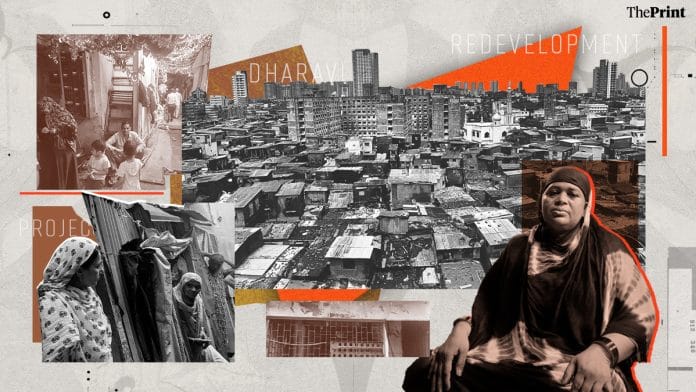Mumbai: Mehjabeen Malik, who earns a living off leather belts she makes at her home in Mumbai’s sprawling Dharavi slum, is extremely worried these days.
The 38-year-old has been living in a ramshackle one-room tenement she built on top of a drain in Dharavi, one of Asia’s largest slums, 20 years ago.
The room has a single light bulb, the roof is on the brink of collapse, the stench from a gutter permeates the space and mosquitoes keep her awake at night.
Since the Maharashtra government announced a plan to redevelop Dharavi in 2003, Malik has dreamed of having a new house in cleaner surroundings. But she was shocked to discover that she was “ineligible” to benefit from the revamp project according to the state’s norms.
“I don’t know what to do. I showed them all my papers, my Aadhaar card, voting card, previous survey papers, light bill, everything. But I don’t know why I am ineligible to get a house,” she said.
Malik has been living in the slum since 2003, but only tenements built before 2000 are eligible for free housing in Dharavi itself under the redevelopment scheme.
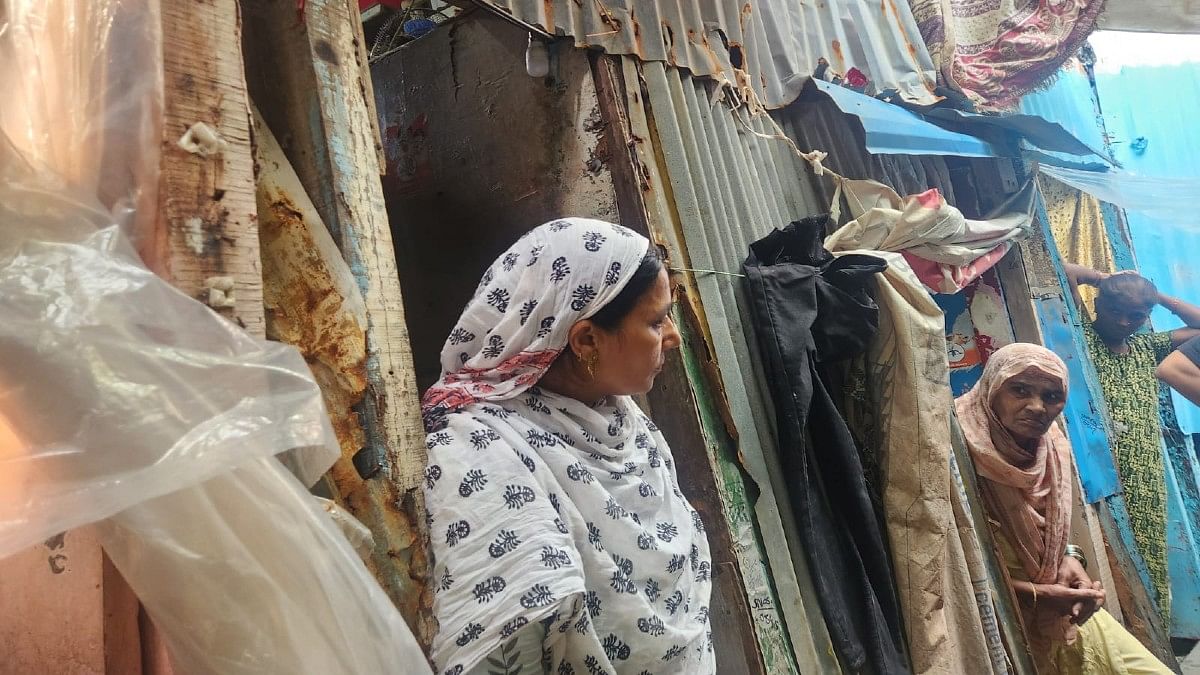
Malik is not alone. Thousands of people across Dharavi who settled there after 2000 are worried about their future which hinges on their eligibility for free housing or affordable rental homes under the plan to redevelop the slum.
This worry has turned into political ammo for both the ruling and opposition parties ahead of state assembly polls as the two-decade-old Dharavi redevelopment project stumbles to take off.
Pre-poll politics over Dharavi
In 2022, the Maharashtra government awarded the Dharavi redevelopment project to the Adani Group which had emerged as the highest bidder.
In September the same year, Adani Realty established a special purpose vehicle (SPV) called the Dharavi Redevelopment Project Pvt Ltd (DRPPL) with the state government’s Dharavi Redevelopment Project Authority. This unit was set up two decades ago under the state’s Slum Rehabilitation Authority (SRA) specifically for the Dharavi project. Adani Realty owns 80 percent of DRPPL.
With the Maharashtra assembly polls scheduled for 20 November, the Dharavi redevelopment project has emerged as a significant election issue, limited not just to Dharavi’s 259 hectares but the entire city.
The Opposition Maha Vikas Aghadi (MVA)—which comprises the Congress, the Shiv Sena (Uddhav Balasaheb Thackeray) and the Nationalist Congress Party (Sharadchandra Pawar) —is opposed to the plan and has accused the Mahayuti government of giving undue favours to the Adani-led DRPPL.
The government’s plan, they allege, is to throw Dharavi residents out of the neighbourhood and give the area—in a prime location between centrally-located Sion and Dadar on one side and the plush Bandra Kurla Complex on the other—on a platter to the “government’s favourite developer”.
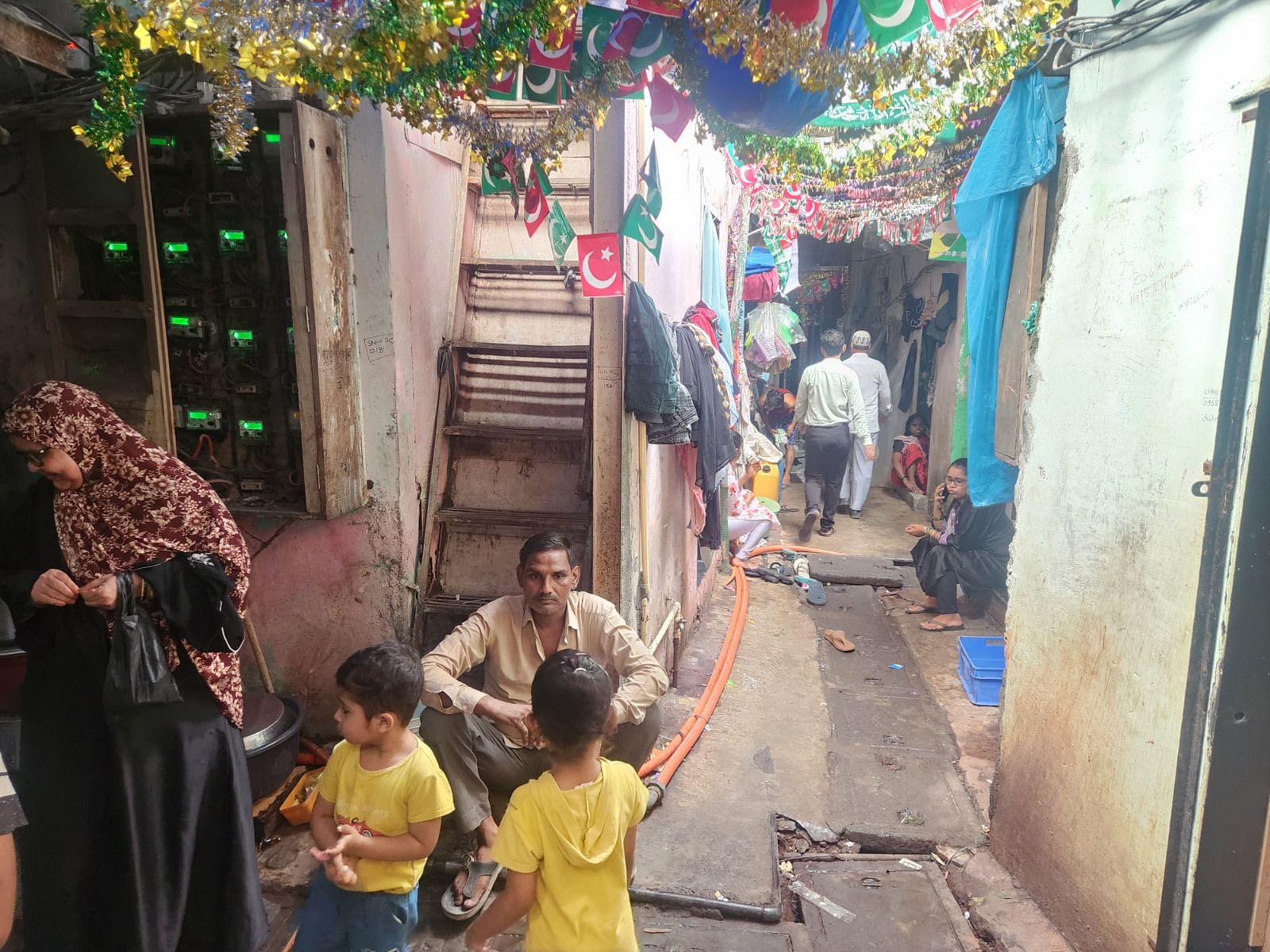
Before the poll code of conduct kicked in, the state government allotted 1,080 acres of land across Mumbai in areas such as Kurla Dairy, Mulund, the salt pan lands, the Deonar dumping ground and Madh Island to the Adani-led DRPPL to create housing for those deemed ineligible under the Dharavi redevelopment project.
The land partially on the city’s infamous Deonar dumping ground sparked more criticism from opposition leaders.
The MVA sees this as the government’s attempt to hand over Mumbai to the Adani Group.
“What have you not given Adani? Lands across Mumbai. What should we live for then? We fought for this Mumbai and gave our blood. It wasn’t distributed to us by Adani,” Uddhav Thackeray said at his annual Dussehra rally on 12 October.
“Adani is not my enemy, but if you are going to give Adani all of Mumbai, I am declaring now that when our government comes to power, I will scrap the Dharavi tender,” he added.
The Mahayuti, on the other hand, maintains that the government is simply making sure that those ineligible for free housing in Dharavi itself under the project are not left homeless and are rehabilitated on the lands allocated to DRPPL across Mumbai.
At his own Dussehra rally, Maharashtra Chief Minister Eknath Shinde said, “You built bungalow after bungalow, but you want to ensure that the people of Dharavi stay on the road. We will rehabilitate all 2.10 lakh (eligible and ineligible) residents of Dharavi.”
The lack of a finalised master plan is adding to the anxiety of Dharavi residents and giving heft to the Opposition’s narrative about the government wanting to throw the residents out of Dharavi to make way for Adani’s glitzy high-rises.
A DRPPL official said the master plan has been submitted to the government, and there has been some back and forth. “The government will hopefully approve a final version soon,” he added.
ThePrint reached the Adani-led DRPPL, the special purpose vehicle in charge of the project, via email and calls. The report will be updated once the response comes in.
S.V.R. Srinivas, CEO of the Dharavi Redevelopment Authority, told ThePrint he didn’t want to comment on the political allegations but said the government was focused on providing houses to the residents of Dharavi.
“Yes, there are concerns that people inside Dharavi have and they need to be addressed, and we will do that. In fact, in this project, we are giving housing for all. In any slum rehabilitation project, normally, ineligible people don’t get any house. They are thrown out. But individual slum redevelopment projects are very small compared with the Dharavi revamp plan,” Srinivas said.
“Here, the numbers are huge. We can’t throw away lakhs of people. And so we have, for the first time in India, come out with a solution and made these criteria where everyone will somehow get a house,” he added.
Srinivas also clarified that contrary to the narrative that Mumbai’s lands are being given to Adani, the ownership of the lands intended to rehabilitate Dharavi residents will remain with the state’s Dharavi Redevelopment Project Authority.
“DRPPL (the Adani-led special purpose vehicle) will only have development rights,” he said.
Also read: Dharavi Redevelopment project world’s biggest land scam; MVA govt will scrap it: Gaikwad
Inordinate delays and controversies
Dharavi is a complex neighbourhood spread across 259 hectares with a population of about 6.5 lakh people, according to the 2011 census.
Often dubbed as a mini India, Dharavi is a crucial vote bank for almost all major parties in Maharashtra as it has multiple micro-communities of people originally from various states such as Tamil Nadu, Maharashtra, Gujarat, Haryana and West Bengal calling it their home.
It is also home to thriving cottage industries—leather tanneries, potters, food items, embroidery units and recyclers—operating from tiny 180-sq-ft rooms that often double up as the business owners’ residences.
The Dharavi redevelopment project was first conceived by the state’s Congress and undivided Nationalist Congress Party (NCP) government in 2003 and a formal notification was issued in 2004.
Despite some false starts before every election, there has been no progress on the project over the past two decades.
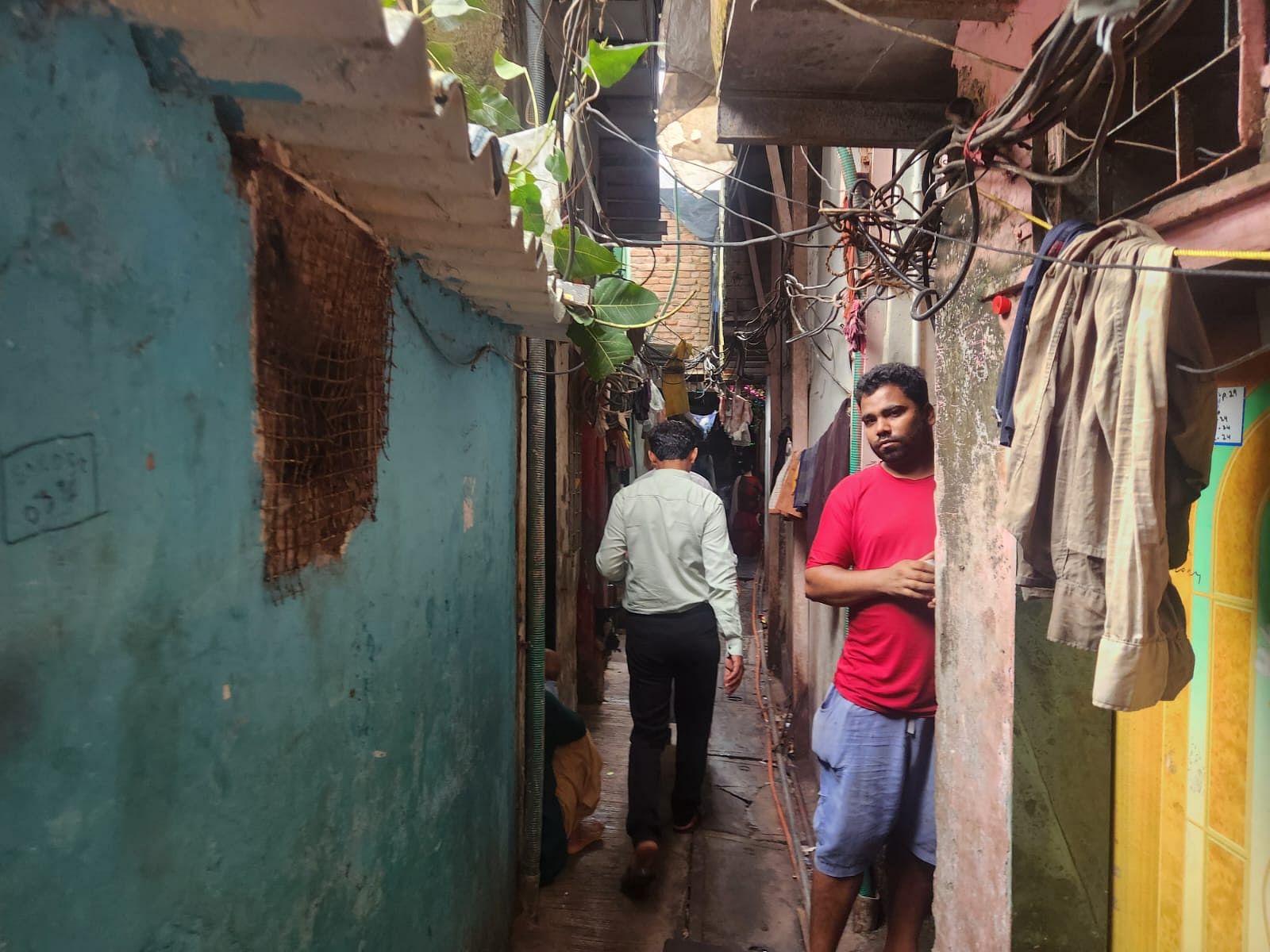
According to state government data, 173.9 hectares will be part of the redevelopment project. Of this, 147.4 hectares are estimated to be currently occupied by slums.
The initial plan was to divide Dharavi into five sectors, and sequentially redevelop each sector.
When the project failed to take off for a decade, the then Congress-NCP government handed over the easiest of the five sectors to revamp to the Maharashtra Housing and Area Development Authority (MHADA) in an apparent bid to show some progress before the 2014 Lok Sabha and state polls.
MHADA built five buildings and rehabilitated just a few hundred residents.
Then the Fadnavis-led government in 2018 decided to combine all five sectors across 240 hectares and have an SPV, comprising the state’s Dharavi Redevelopment Project Authority (DRPA) and a single lead developer, take up the project.
Based on the 2018 government resolution, the Fadnavis government invited fresh bids for the project. Dubai’s Seclink Technologies Corporation emerged as the highest bidder for the project, followed by Adani Infrastructure.
However, the Thackeray-led MVA government scrapped this tender in October 2020, saying a 45-acre railway land parcel that later became a part of the project was not considered in the tender process.
In October 2022, two months after the Shiv Sena-BJP government under Shinde was sworn in, the dispensation invited fresh bids. The Adani Group emerged as the most preferred bidder.
Through its government resolutions in 2018 and 2022, the state government relaxed several norms for the project to sweeten the deal for developers to come forward.
All these changes have sparked raging political controversies.
“There are risks involved in this because of its sheer size and magnitude. It is not like any other real estate project; it is like dismantling and rebuilding an entire city,” said Pankaj Kapur, managing director of Liases and Foras, a real estate consultant. “There is a lot of livelihood that is dependent on this and so politically-motivated agitations will keep happening. This is not new.”
A change in government will mean another spanner in the works, he added.
‘Norms relaxed to benefit Adani’
Through its 2018 and 2022 government resolutions, the state government relaxed the rules on the value and use of Transferable Development Rights (TDR)—a concept that allows developers to transfer the unused development potential of a plot and use it elsewhere in zones of the city that are not fully developed.
The government has allowed Dharavi to use TDR without indexation. Generally, the value of the TDR is indexed to the ready reckoner rate of the land, and the value of slum TDR is typically lower than other forms of TDR.
The government has also allowed DRPPL to use the TDR generated from Dharavi anywhere in Mumbai, in the suburbs as well as in the island city, which is usually not the case for other projects.
Prashant Thakur, regional director and head of research at real estate consultancy firm Anarock Group, said the TDR relaxations have also raised concerns amongst developers about oversupply in the market as the Dharavi TDR can be used anywhere in Mumbai.
“But if you see the pros and cons of Dharavi being redeveloped versus the TDR relaxations, the benefits are more than the downside could be,” said Thakur.
He said the government provides additional Floor Space Index in every slum rehabilitation project to incentivise developers. Given the sheer scale of the Dharavi project, the government has implemented these relaxations in TDR for Dharavi.
“There are concerns about oversupply, but we cannot concretely say that it will have a negative impact,” he added.
The opposition MVA alleges that Adani firms have been given undue favours. Eliminating indexation and making it mandatory for other developers to buy at least 40 percent of the TDR they need from the Dharavi SPV will give the Adani Group a significant monetary advantage, they allege.
The Adani Group has denied the allegations.
“We will rethink this project. We don’t oppose the builder, but if there is anything wrong in the tender process, we will correct that. If the company is going beyond the tender, then we will oppose it,” Thackeray told ThePrint at a press conference a few weeks ago.
“Why is only one project given so much leeway? But if in the garb of this project, the company wants to loot Mumbai, get free land, disturb its population, then we will not allow it,” he added.
He said the development rights belong first to the residents of Dharavi and then to others.
Congress MP Varsha Gaikwad has also raised concerns about how rehabilitating those deemed ineligible under the project at a location outside Dharavi will negatively impact the commercial viability of the slum.
“The redevelopment plan forced upon Dharavikars will uproot businesses and will have a cascading effect in terms of high prices for your favourite products because having a workshop in the middle of the city and having one at one end of the city, will escalate the costs of production. This will benefit only Modi and Adani,” she said.
Mehjabeen Malik, quoted earlier, is among those who are also worried about her business. Her husband is a trained mechanic but is currently jobless. Malik runs her household of eight people by making leather belts at home. She earns Rs 100 for 20 belts she makes every day.
Who gets a house and who doesn’t
In March, small teams from DRPPL began fanning out across Dharavi’s narrow alleyways for a mammoth exercise to determine which hutments qualified for free housing under government norms.

The only other survey conducted in Dharavi was in 2009 when a non-government organisation, MASHAL, found that 59,000 tenements spread across approximately 242 hectares were owned by less than 100 families. It also found that at least 60 percent of the residents would be ineligible for the slum rehabilitation scheme.
Srinivas said DRPPL’s recent survey has so far covered 18,000 tenements and they hope to wrap up the process by the end of this fiscal year. It is expected to take at least seven years to fully implement the entire redevelopment project.
The survey has four stages. First, DRPPL conducts a general survey of the lanes. Next, each structure is given a unique number. After that, a laser mapping of lanes is done to ensure no structure is overlooked. Finally, team members visit each family to collect the necessary documents, Srinivas said.
The survey is now categorising residents into two groups: eligible and ineligible.
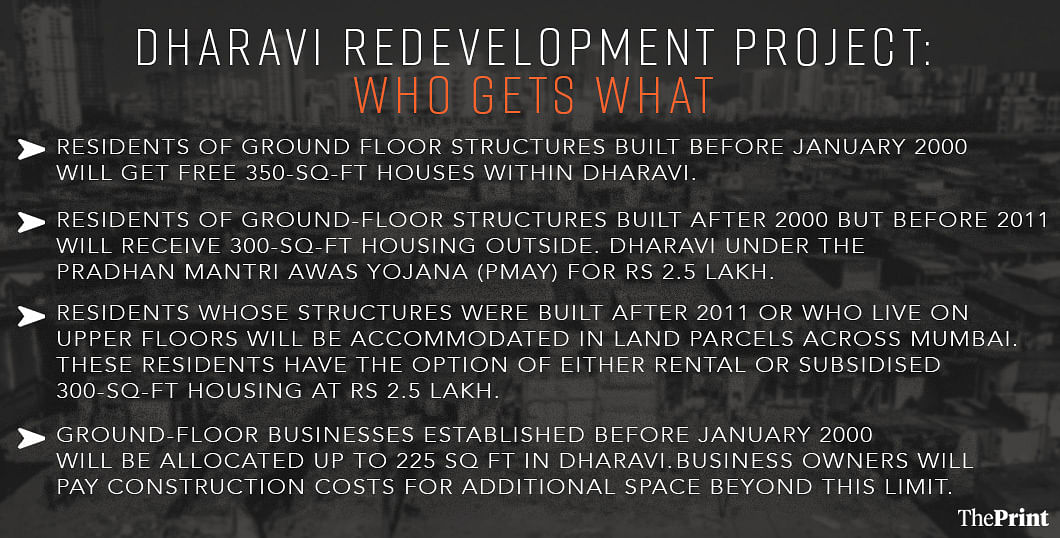
The plan also involves creating open spaces as well as social infrastructure such as schools, and health centres across Dharavi.
Also read: Uddhav wants to grab 37-acre plot in Dharavi, Aaditya spreading lies about redevelopment: Shelar
A community divided by fear and hope
Ansar Sheikh, currently unemployed, has been living in Dharavi since 1992. He supports redevelopment and is eligible to get a free house in Dharavi.
“I have two children and I want a good environment for them as they grow up,” he said.
But when he considers the politics of the issue, he feels uncertain about what to trust.
“About 90 percent of us don’t have any knowledge and we are getting tangled in what political people tell us. But wherever they give us accommodation, it should not be someplace very cut off with no resources around. Then nobody will go. But right now anything is better than our current living conditions,” he said.
A large chunk of the population has added extra floors to their buildings and rents them out. While the original residents are happy they will get a house inside Dharavi, they are worried about their tenants and the rental income it generates.
For 54-year-old Asha Jadhav, whose husband is paralysed, the rent of Rs 6,000 she receives for her mezzanine floor helps run her house.
Similarly, Shamima Sheikh is worried about her widowed daughter who lives on rent in a Dharavi hut. Sheikh may get a house within Dharavi, but she fears she will be separated from her daughter, who may be assigned a house far away.
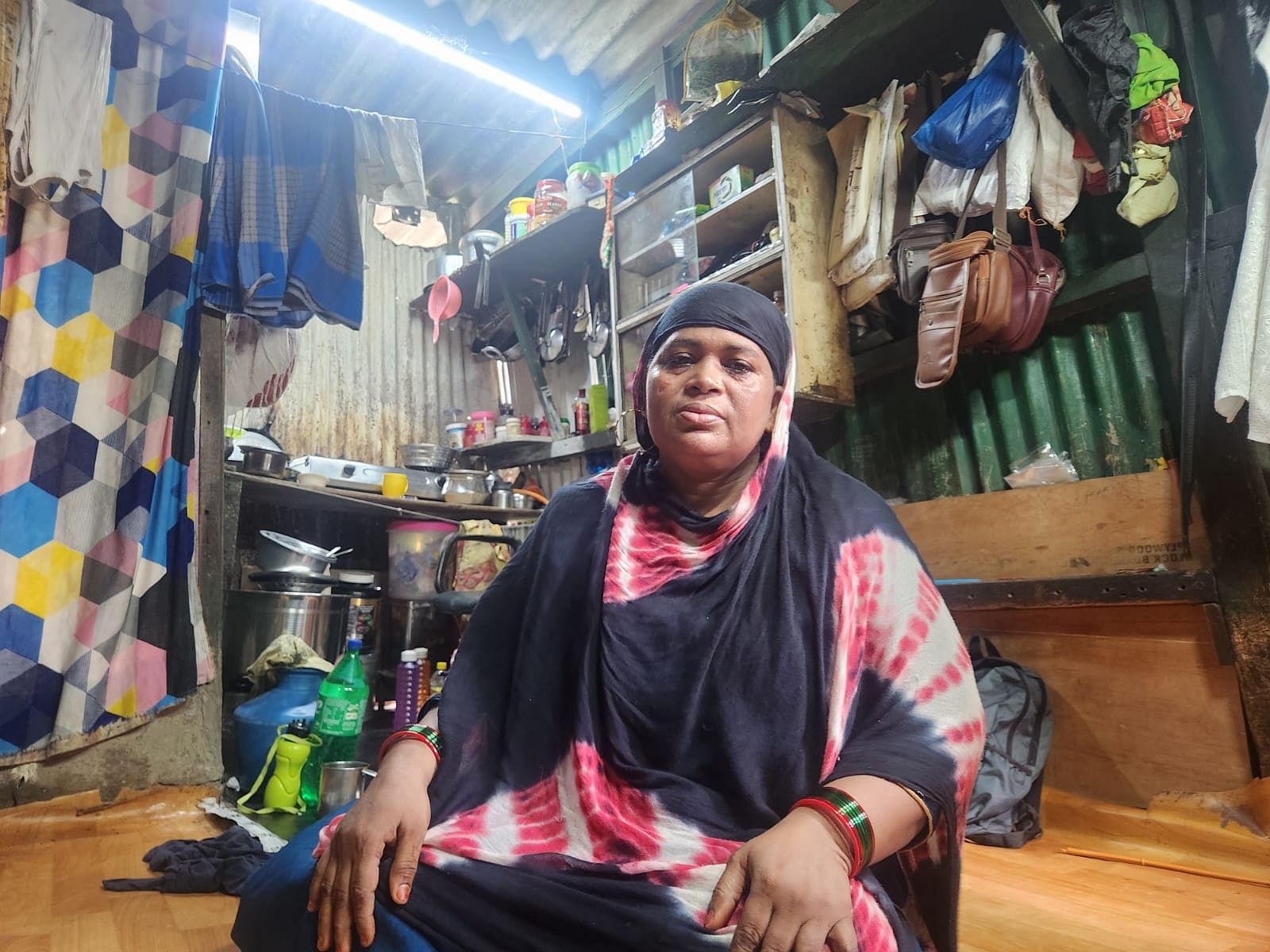
Some people feel uncomfortable because of the ‘Adani’ name’s association with the project.
“Today, Adani’s name is controversial. And nobody can say with confidence about what is really going on,” said Tarundas Swami, who has been living in Dharavi since he was born in 1967.
Dharavi Bachao Andolan Samiti, a local NGO opposing the Adani-led redevelopment project, has been protesting in the slum to voice its reservations about the project and educate people about the redevelopment.
Advocate Sandeep Katke, a member of the Dharavi Bachao Andolan, said all Dharavikars should get houses inside Dharavi.
“We are not against development or any builder but instead what we are getting is important. There should be no eligible or ineligible categories. We should all get a house here,” said Katke.
Srinivas said people should not worry about being given a house outside Dharavi. The government will offer several options to ease the transition, he said
“Those who get a house outside Dharavi can also choose to get it on rent with a buyback option. They can pay in instalments. The cost of a slum tenement in Dharavi is anywhere between Rs 20-25 lakh, while under PMAY, we are giving a house at a highly subsidised rate of just Rs 2.5 lakh,” he added.
Thackeray told ThePrint the development of houses outside Dharavi on land in Mumbai lands would end up benefiting Adani. “It is said that those ineligible should get the houses either on construction cost or rental basis. So who is getting benefited? Of course, Adani.”
Away from the politics, Mina Bechalwar, a vegetable vendor, falls under the second category and will have to shell out Rs 2.5 lakh for a PMAY house.
“My husband works as a watchman and I have eight members in my house. With the cost of everything rising, how will I make ends meet and still have some money left to pay any rent?” Bechalwar said.
Her neighbour, Laxmi Kidke, who is facing health issues because of uterine surgery, says she needs medicines costing Rs 500 every two weeks.
“My son earns Rs 150 a day. I can’t work because of my condition. My entire livelihood is dependent on these rentals that I get. How can I pay for the maintenance? I can’t do heavy-duty manual work. I can’t sleep properly, my anxiety is rising every day,” Laxmi said.
Dharavikars face many other issues when presenting their documents.
Some say their documents were destroyed during one of Mumbai’s heavy rainstorms that often flood the entire neighbourhood.
Others say they lost their documents in a fire or theft. And there are some who say they sold the ownership of their house to someone for money but continue to live there.
“If they take our people into confidence, why will we oppose? We are not that educated but many who are educated in Dharavi and they should be involved in this decision-making,” said Yallamma Kunchkolu, who has been living in Dharavi for more than 50 years.
“You are taking our gold and giving us mud. That’s wrong.”
(Edited by Sugita Katyal)
Also read: ‘Gross disrespect to federalism’: Cong accuses Mahayuti govt of double-standards on Dharavi project



